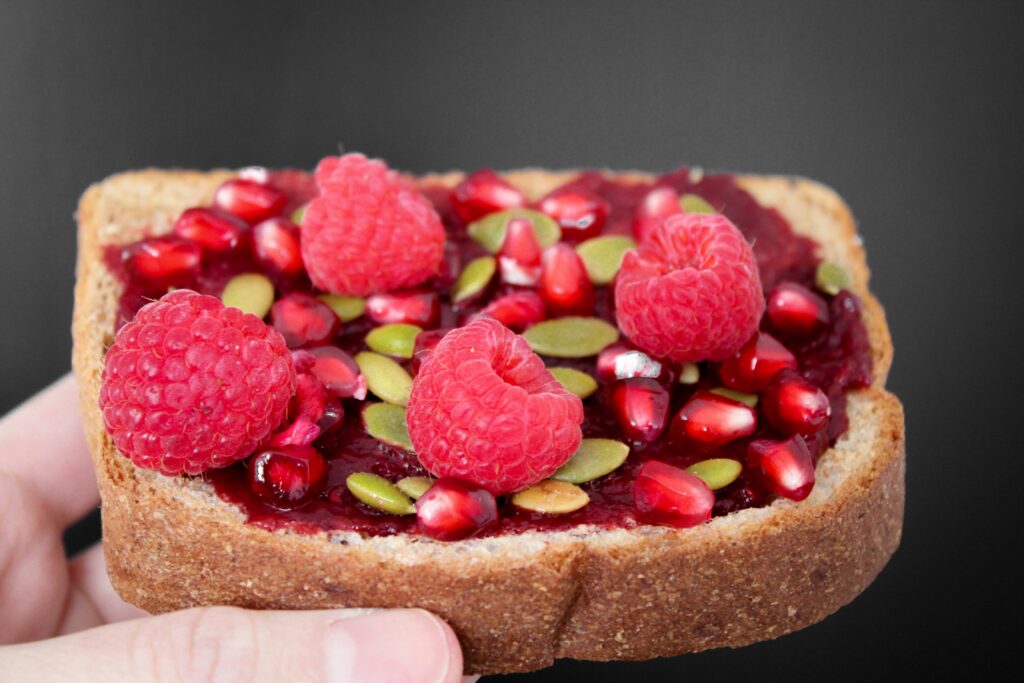Nurturing healthy eating habits in children is crucial for their growth, development, and long-term well-being. By focusing on the five essential food groups—fruits, vegetables, grains, proteins, and dairy—we can ensure that kids receive a well-rounded diet that supports their energy needs and development. This article offers practical advice on incorporating these food groups into children’s diets and making healthy eating an enjoyable part of their daily lives.
Fruits: Sweet and Nutritious Snacks
Fruits are packed with vitamins, minerals, and fibers essential for kids’ growth and health. Encouraging children to eat a variety of fruits can be as simple as making fruit consumption fun and interactive. For example, creating visually appealing fruit plates, freezing fruit for a refreshing treat, or blending fruits into smoothies can make fruits more appealing to kids. Introducing fruits as a natural dessert or a snack option can also encourage children to choose fruits over processed sweets.
Buy Nutribullet Personal Smoothie Blender
Ninja personal Blender for Smoothies
Vegetables: The Nutrient Powerhouses
Vegetables are vital for providing kids with vitamins, minerals, and fibers. To increase children’s vegetable intake, involve them in selecting and preparing vegetables. Growing a vegetable garden, even a small one, can make kids more interested in trying the vegetables they’ve helped to grow. Cutting vegetables into fun shapes or serving them with a favorite dip can also make them more appealing. The key is to introduce a variety of vegetables in different colors to ensure a wide range of nutrients.
Grains: Essential Energy Sources
Whole grains are an important source of energy and nutrients for children. Incorporating whole grains like brown rice, quinoa, and whole wheat bread into meals can boost fiber intake and provide essential nutrients. To make grains more appealing to kids, involve them in baking with whole grains or preparing meals like homemade pizzas on whole grain crusts. Gradually introducing whole grains by mixing them with refined grains can help ease the transition to healthier options.
Tovla Jr. Kids Cooking and Baking Gift Set
Proteins: Building Blocks for the Body
Proteins are essential for children’s growth and muscle development. Including a mix of animal and plant-based proteins ensures that kids receive all the necessary amino acids for growth. Creative meal ideas like DIY taco nights, egg muffins for breakfast, or peanut butter on whole grain toast can make protein-rich foods more enticing. Offering a variety of protein sources and preparing them in child-friendly ways can encourage kids to enjoy their protein intake.
Buy Organic Kids protein Supplement
Organic Chocolate Protein Shake for Kids
Dairy: Strengthening Bones and Teeth
Dairy products are important for children’s bone health due to their high calcium and vitamin D content. For children who do not consume dairy, plant-based alternatives fortified with calcium and vitamin D can be a good option. Making dairy consumption fun, such as by adding natural fruit flavors to milk or offering cheese as a snack, can make dairy products more attractive to kids. Yogurt mixed with fruits can serve as a healthy dessert alternative, promoting dairy intake while satisfying sweet cravings.
Buy Calcium Supplements for Kids
Smarty Pants Multivitamin for Kids



Strategies for Encouraging Healthy Eating Habits
Encouraging kids to eat healthily requires creativity, patience, and involvement. Leading by example is one of the most effective ways to instill healthy eating habits. When children see their parents enjoying a variety of healthy foods, they are more likely to follow suit. Making mealtime fun and interactive, such as through themed meals or colorful dishes, can also make healthy eating more appealing. Allowing children to have a say in meal planning and preparation gives them a sense of ownership over their eating habits, making them more likely to try new foods.
Education plays a crucial role in fostering healthy eating habits. Discussing the benefits of different foods, where they come from, and how they contribute to health can make children more interested in trying them. Involving children in cooking and meal preparation can also provide hands-on learning opportunities about nutrition and healthy eating.
Fostering an environment where healthy eating is not just a requirement but a joyous activity can have profound impacts on children’s relationship with food that lasts a lifetime. It’s essential to embed the importance of nutrition in a way that is both engaging and educational.
Here are further insights into making this journey a positive one:
Creating a Positive Mealtime Atmosphere
The atmosphere during mealtime can significantly influence children’s eating habits. Stressful or rushed meals may lead to unhealthy eating patterns, whereas a relaxed environment encourages mindful eating. Engaging in conversations, sharing stories, and making mealtime a moment for family bonding can positively affect children’s willingness to try new foods and enjoy their meals. The focus should be on the joy of eating and the experience of sharing meals, rather than solely on the nutritional value of the food on the plate.
Educating Through Exploration
Children are naturally curious, making exploration an excellent tool for education. Organize visits to local farms, farmers’ markets, or community gardens where kids can see where their food comes from and learn about the process of growing and harvesting produce. This direct connection with food can foster a deeper appreciation and willingness to eat a variety of healthy food such as fruits and vegetables.
Reinforcing Positive Choices
Positive reinforcement plays a crucial role in encouraging children to make healthy food choices. Celebrate small victories, such as trying a new vegetable or choosing a piece of fruit over a sugary snack. However, it’s important to avoid using food as a reward, which can create unhealthy associations with food. Instead, praise, stickers, or an extra story at bedtime can be effective rewards that don’t center around food.
Offering Choices Within Boundaries
Giving children choices within set boundaries can help them feel empowered and more in control of their eating habits. For instance, asking “Would you like carrots or cucumbers with your lunch?” provides a sense of autonomy while ensuring that the options available are healthy. This approach helps in building decision-making skills around food that can aid them in making healthier choices independently as they grow.
The Power of Repetition
Children may not like a new food the first time they try it, and that’s perfectly normal. It often takes multiple exposures to a new food before a child accepts it. Encourage kids to try just a small bite without pressure to eat more. Over time, their taste preferences can evolve to include a wider variety of foods.
Cultivating Cooking Skills
Involving children in meal preparation can have numerous benefits, from developing basic cooking skills to understanding the effort that goes into preparing meals. Tasks like washing vegetables, stirring ingredients, or even reading recipes aloud are not only educational but also fun ways to spend time together. This involvement can increase their likelihood of eating the meals they helped prepare.
Modeling Mindful Eating
Teaching children to listen to their hunger and fullness cues is a crucial aspect of nurturing a healthy relationship with food. Encourage them to eat slowly and savor their food, which can lead to better digestion and satisfaction with eating. Modeling these behaviors yourself can reinforce the importance of eating mindfully.
Embracing Cultural Diversity Through Food
Introducing children to foods from different cultures can broaden their palate and foster an appreciation for diversity. This can be an exciting adventure, exploring new flavors, spices, and cooking methods together. It’s also an excellent opportunity to learn about other cultures and traditions, making mealtime both educational and exciting.
The Journey of Lifelong Health
Ultimately, the goal is to set children on a path toward lifelong health and well-being. By instilling a love for healthy eating from a young age, we not only contribute to their physical growth but also to their emotional and social development. It’s about creating a culture of wellness that they can carry into adulthood, influencing not just their own choices but potentially the choices of future generations.
In conclusion, nurturing healthy eating habits in children is a multifaceted journey that goes beyond just the food on the plate. It involves education, exploration, and engagement in a way that makes healthy eating a joyful and integral part of their lives. By adopting these practices, we can hope to raise a generation that values nutrition, understands the importance of a balanced diet, and carries these lessons throughout their lives, ensuring their health and happiness.



Here are some tools to buy that can help children in developing healthy eating habits for life.
Joyful Recipes Cookbook for kids
Supergood Baking Book for Kids
Curious Measuring cups for Kids
Please note that some of the links in this post are affiliate links. This means that if you click on the link and purchase the item, I will receive a small commission at no additional cost to you. As an Amazon Associate, I earn from qualifying purchases. I only recommend products and services that I believe will add value to my readers. Thank you for your support!




